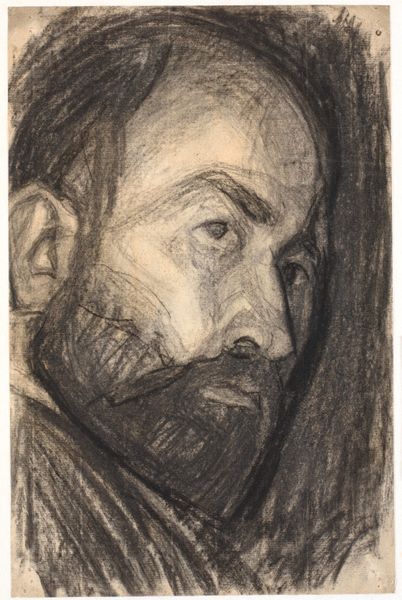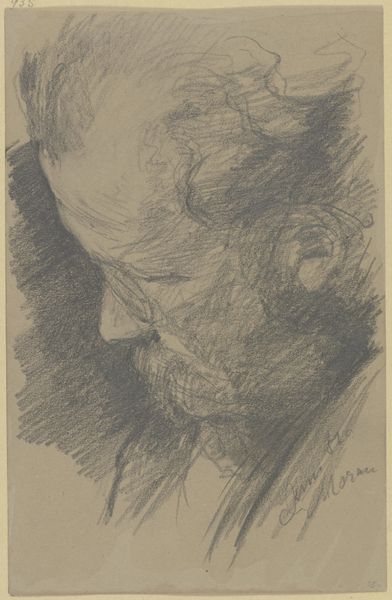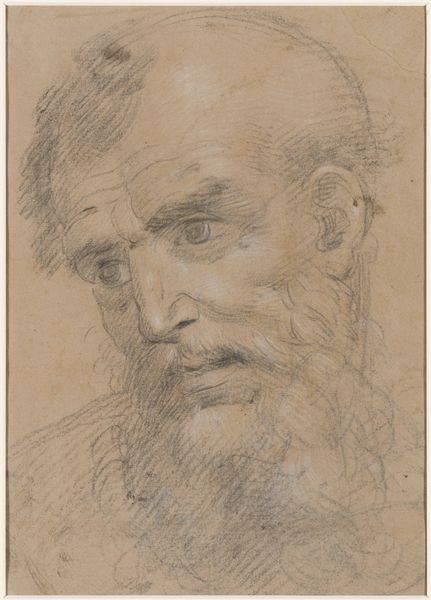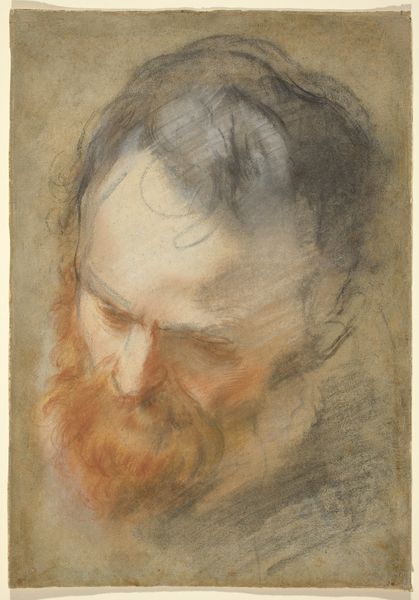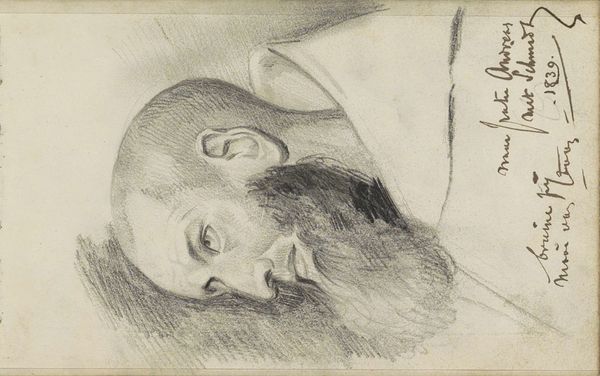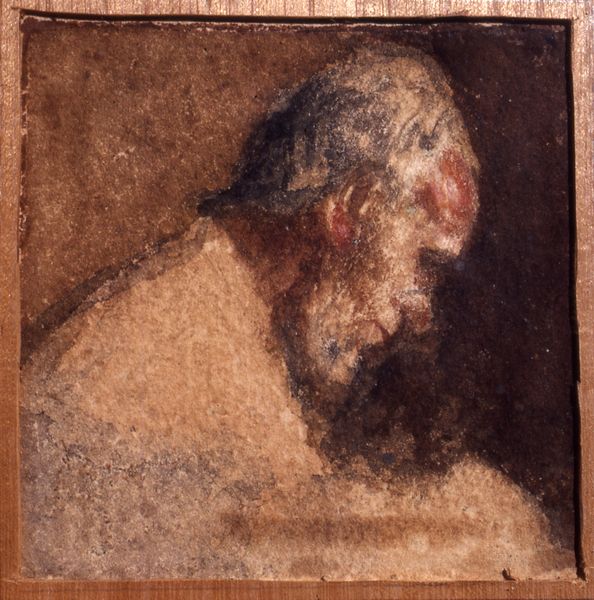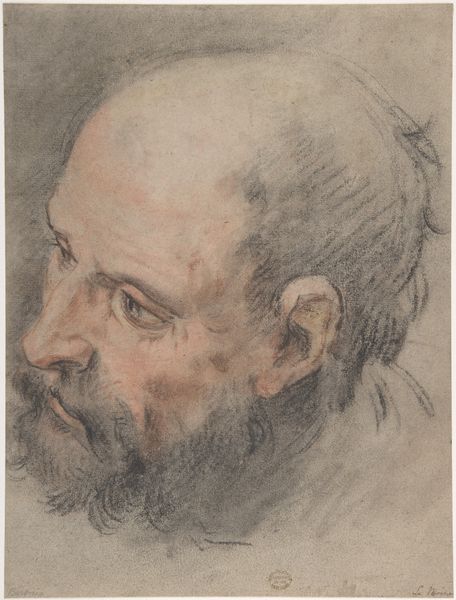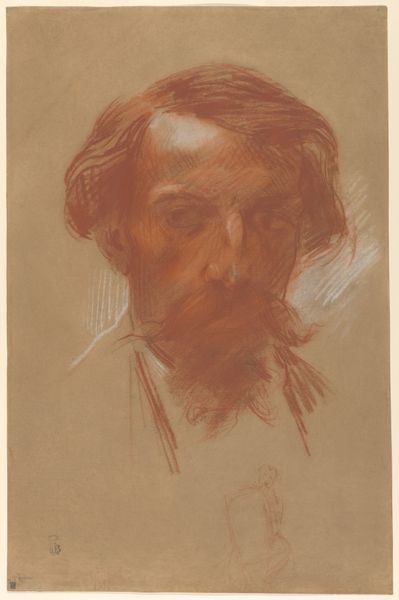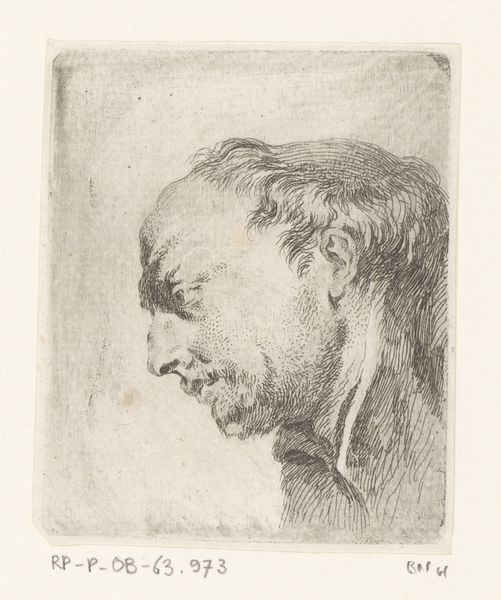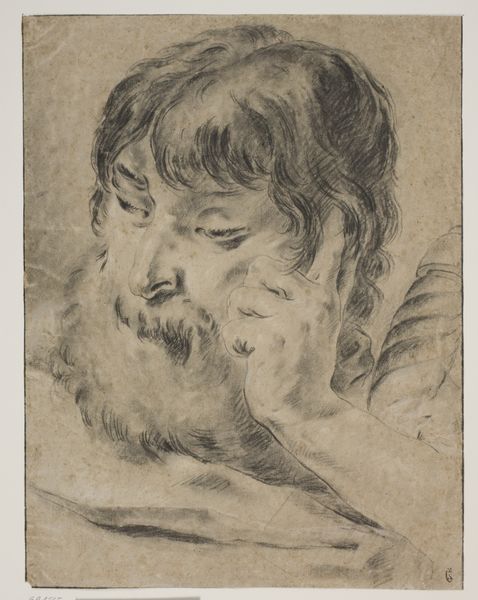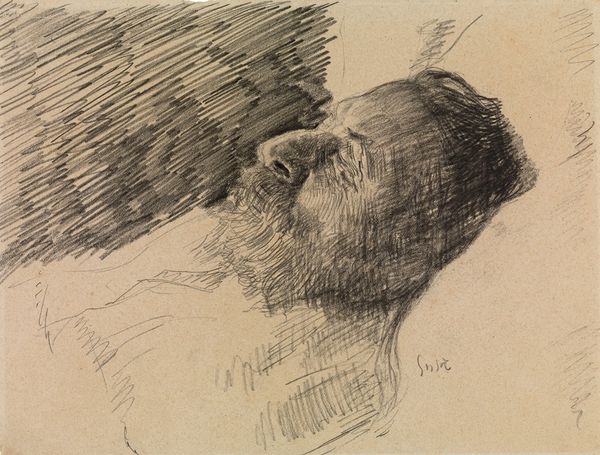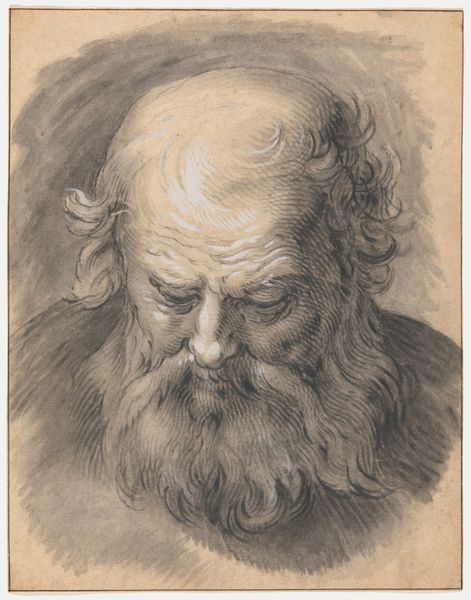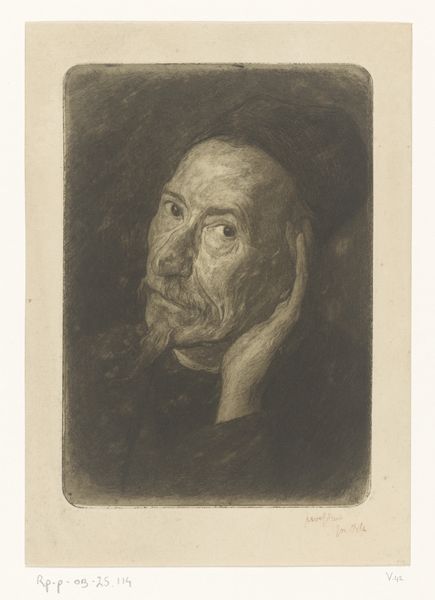
drawing, print, charcoal, pastel
#
portrait
#
drawing
#
head
# print
#
death
#
men
#
portrait drawing
#
charcoal
#
pastel
#
portrait art
#
realism
Dimensions: 12 3/4 × 18 1/8 in. (32.4 × 46 cm)
Copyright: Public Domain
Curator: Oh, it's... stark. Almost feels intrusive to witness such a private moment. Like catching a glimpse of someone's dream – or rather, their final dream. Editor: Here we have Pierre-Ernest Prins’ "Manet on His Deathbed," made sometime between 1878 and 1888, residing here at the Metropolitan Museum of Art. It’s rendered in charcoal and pastel, primarily. A poignant sketch, wouldn’t you agree? Curator: Poignant is…gentle. I find it unsettling. There’s a rawness. That stark white against the ochre skin tone – it feels unfinished, suspended. As if life itself is being gently erased. Editor: Indeed, the white does hold symbolic weight, doesn’t it? The shroud, the blank canvas… traditionally, white represents purity, the passage to the afterlife, the cleansing of the soul. It's visually striking in contrast with the earthier tones of Manet's features. There’s a visual language here of earthly departure into a spiritual realm. Curator: I see your point, of course. But perhaps that 'unfinished' quality, that almost brutal honesty in the sketching, is what hits me. No idealization here, no angelic glow. Just... a man, succumbing. It is oddly…beautiful. But so very human. Perhaps too human, even, since he had passed. A bit vulture-like almost. Editor: It could be interpreted as a confrontation with mortality itself. And that unflinching gaze toward death—represented in the drawing’s style—challenges viewers to grapple with their own awareness of impermanence. Do you see how Manet’s profile—rendered here posthumously—resembles those on ancient funerary masks or sarcophagi? Curator: You’re right. There is something timeless about the profile, but at first I think it hides in the blunt simplicity of the lines. Perhaps this reminds us that even artistic giants like Manet are brought down to a primal level in the end. Editor: And consider that this image, a print from a drawing of a dead man, persists over time. The work serves as a cultural anchor for our collective experience of mortality. Perhaps, we gaze at such works not to merely witness death, but to comprehend a fundamental human experience. Curator: So, in looking at death, we remember life? Yes, I suppose. A sober reflection indeed. Thanks for that, it reframes things for me in a really thoughtful way. Editor: A fitting tribute, I'd say. One of the more moving portrayals that I know.
Comments
No comments
Be the first to comment and join the conversation on the ultimate creative platform.
